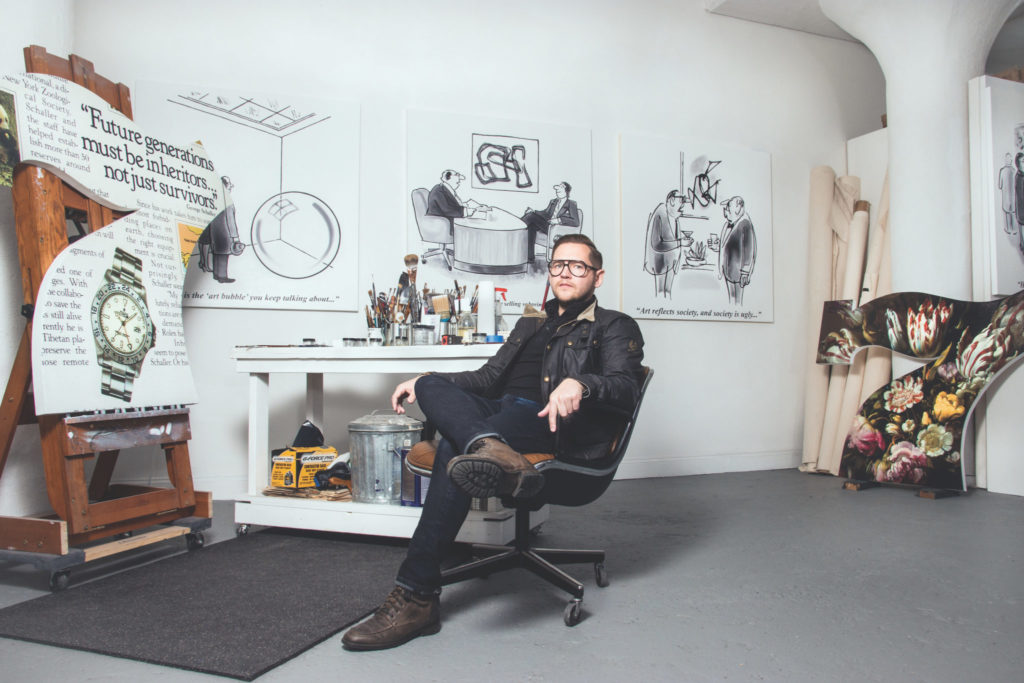The conceptual artwork of artist Charles Lutz takes on luxury, consumption, and ego.
By Rachel Felder

Inside an imposing industrial building in Clinton Hill, Brooklyn, near a noisy stretch of highway, there’s something you might not expect to find: images of vintage Rolex watches, silk-screened on canvas and transformed into artwork that’s provocative, assertive, and unconventionally beautiful.
In one piece, a detail of a vintage advertisement for a stainless-steel Rolex Explorer has been blown up onto a canvas that’s shaped like a curvaceous number seven from a slot machine. Another painting features a magnified image of a gold Submariner appropriated from an old Rolex brochure; the canvas’s surface has been deliberately retextured to resemble the guilloché detailing on a watch dial. A third painting simultaneously recalls the bezel of a Submariner and a roulette table; the six-foot canvas even features a cut-out circle where the spinning wheel would be.
The pieces are by conceptual artist Charles Lutz, the 35-year-old provocateur who burst onto the New York art scene in 2007 with a series of paintings that duplicated Warhol silk screens. Now, with these new pieces, which Lutz has dubbed his Transaction paintings, the artist continues to explore issues of value, appropriation, and originality, as well as the nature of luxury and consumerism. For Lutz, a Rolex serves as a symbol of affluence. “Even though it’s a Swiss watch, I feel like it’s kind of the American idealism of what luxury watches represent,” Lutz says.

Dressed in a low-key outfit of jeans and a leather jacket, the boyish-looking artist could almost pass as a current student at his alma mater, Pratt Institute, an easy stroll away. And he talks about his paintings, which also include appropriated images from Crown Royal Canadian Whiskey and tulips from Dutch still life paintings with a youthful enthusiasm. “The Submariner is printed the same exact way as the Dutch still life,” Lutz says. “They’re both derived from digital files. You have this skim of content that is talking about the same thing, and the process is what ties them together, in a way. The idea of value is within each of the images, but the process is the way of conveying the correlation between the different subject matters.”
Perhaps it’s not surprising that Lutz, who was born and raised in Pittsburgh, points to the work of hometown hero Andy Warhol as his earliest inspiration. He was about 8 years old when he was first introduced to the pop master’s work at the Carnegie Museum of Art; when the Andy Warhol Museum opened in 1994, Lutz, then in high school, spent hours in the galleries. “Being able to get that exposure was really transformative,” he says.